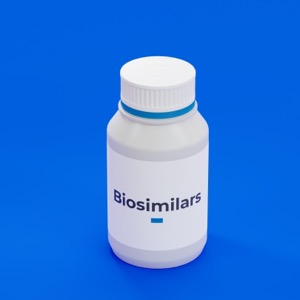By Karen Blum
To understand the growing prominence of biosimilars, one need only look at recent headlines in the past year, speakers said during a presentation at Asembia’s AXS24 Summit, in Las Vegas.
For example, on April 1, CVS Caremark removed Humira (adalimumab, AbbVie) from its major national commercial formularies in favor of covering biosimilars, said Tasmina Hydery, PharmD, MBA, BCGP, the associate director of digital solutions for Cencora. Dr. Hydery cited these additional developments:
• CVS Health launched Cordavis, a subsidiary to work with manufacturers to commercialize or coproduce biosimilars.
• Mark Cuban Cost Plus Drug Co. joined forces with Coherus to make adalimumab-aqvh (Yusimry), a Humira biosimilar, available at a discounted price of $569.
• The Department of Veterans Affairs replaced Humira on its formulary with the biosimilar adalimumab-bwwd (Hadlima, Organon).
These events are potentially a bellwether for how biosimilars are moving, said Cate Lockhart, PharmD, PhD, the executive director of the Biologics and Biosimilars Collective Intelligence Consortium. “These are some large companies that are now covering biosimilars either exclusively or allowing preferential prescribing and coverage of biosimilars,” Dr. Lockhart said. “I think that’s really important [financially] for … our healthcare system.”
To date, there have been about 48 FDA approvals of biosimilars and 38 launches across a wide range of therapeutic areas, including oncology, supportive care, immunology, endocrinology and ophthalmology, Dr. Hydery said. Most reference products have multiple biosimilars, which “really increases the competitive landscape here,” she said.
One area that has seen growth over the past year is immunomodulators, Dr. Hydery said. There’s “no new news” for infliximab biosimilars. As for etanercept-szzs (Erelzi, Sandoz) and etanercept-ykro (Eticovo, Samsung), launches of these biosimilars aren’t expected until 2028 and 2029 due to ongoing patent litigations, she said. However, there has been a lot of activity in branded and nonbranded formulations of adalimumab biosimilars, which now number 10. Three were approved with interchangeability. The most recent approval was adalimumab-ryvk (Simlandi, Alvotech/Teva) in February 2024; it is the first that’s both interchangeable and available in high concentrations and citrate-free versions.
Other newcomers in the immunomodulator space include three biosimilars for tocilizumab: the IV and subcutaneous forms of tocilizumab-aazg (Tyenne, Fresenius Kabi) and tocilizumab-bavi (Tofidence, Biogen), which has interchangeability. Also in the space: ustekinumab-auub (Wezlana, Amgen) for ustekinumab (Stelara, Janssen), expected Jan. 1, 2025, and natalizumab-sztn (Tyruko, Sandoz) for natalizumab (Tysabri, Biogen), expected sometime in the first half of this year, Dr. Hydery said.
Interchangeability status—which enables the pharmacy to substitute a biosimilar for the original product without consulting the prescriber—has long been an area of confusion, Dr. Lockhart said, and is unique to the United States. Last year, the European Medicines Agency came out with a statement saying any product approved as a biosimilar is automatically assumed to be interchangeable with the reference product and any of its other biosimilars, “which I think is scientifically sound,” she said.
In the United States, there is legislation before Congress called the Biosimilar Red Tape Elimination Act that would make biosimilars interchangeable with the reference product, Dr. Lockhart noted. However, it doesn’t state that biosimilars would be considered interchangeable with other biosimilars for the same reference product.
The speakers reported no relevant financial disclosures beyond their stated employment.




